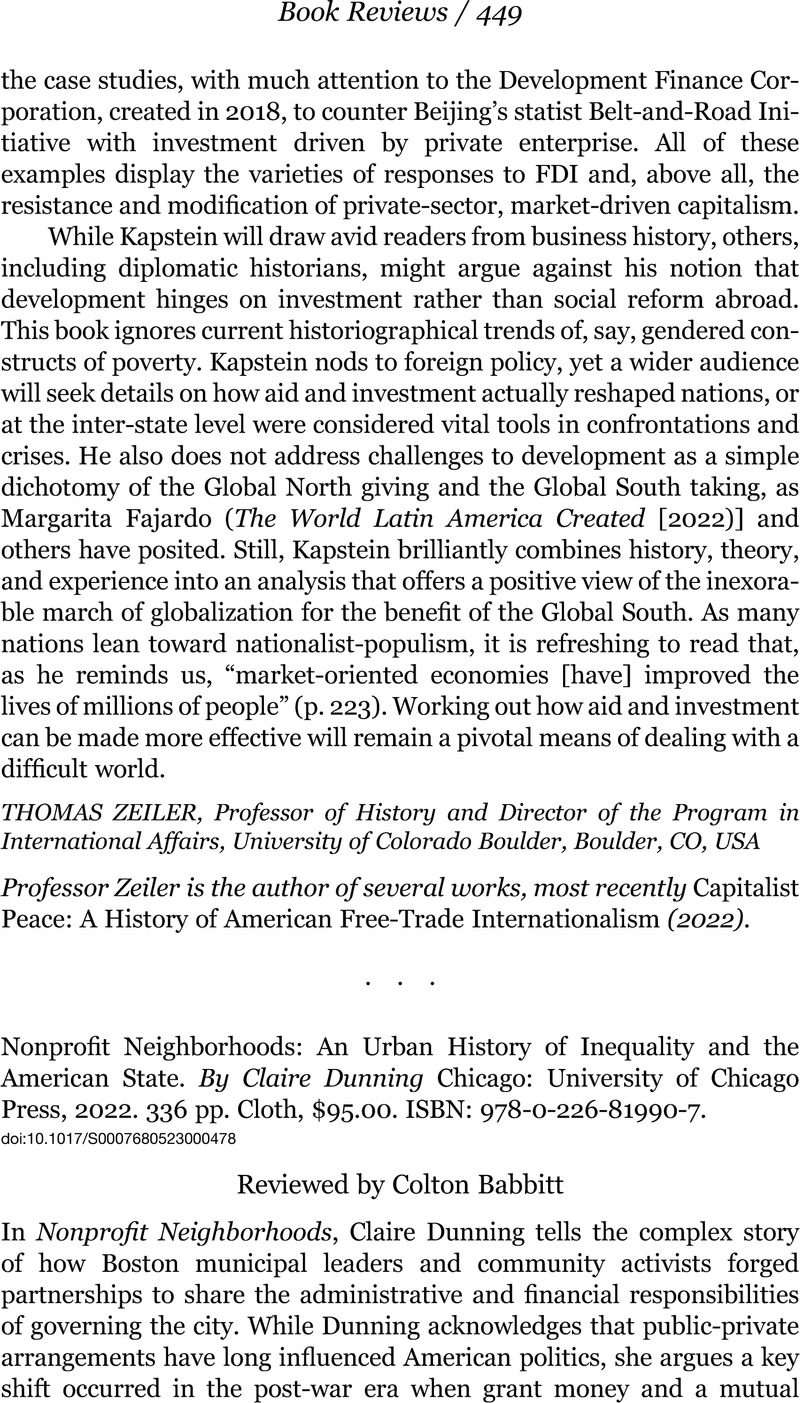No CrossRef data available.
Article contents
Nonprofit Neighborhoods: An Urban History of Inequality and the American State. By Claire Dunning Chicago: University of Chicago Press, 2022. 336 pp. Cloth, $95.00. ISBN: 978-0-226-81990-7.
Review products
Nonprofit Neighborhoods: An Urban History of Inequality and the American State. By Claire Dunning Chicago: University of Chicago Press, 2022. 336 pp. Cloth, $95.00. ISBN: 978-0-226-81990-7.
Published online by Cambridge University Press: 25 September 2023
Abstract
An abstract is not available for this content so a preview has been provided. Please use the Get access link above for information on how to access this content.

- Type
- Book Review
- Information
- Business History Review , Volume 97 , Issue 2: Business, Capitalism, and Slavery , Summer 2023 , pp. 449 - 451
- Copyright
- Copyright © 2023 The President and Fellows of Harvard College


